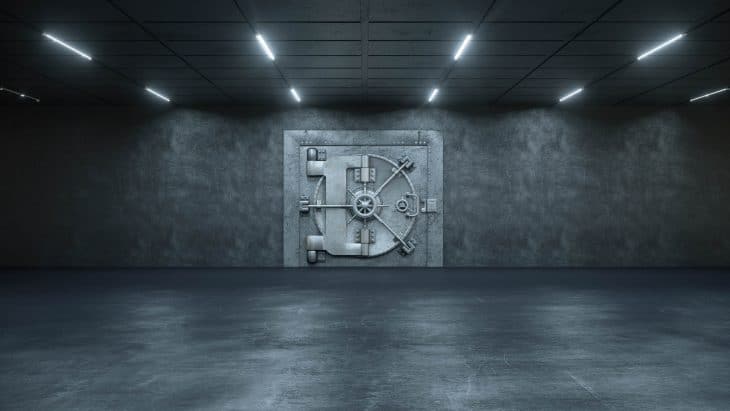
What is the most secure vault in the world? While people would say it is shameful to value material things, it is also natural to want to keep these items safe and kept away from wandering hands. Most people hide these precious items in their homes, tucked deep inside an uncrackable safe, while others depend on security vaults used by banks to store money. There are many types of vaults in the world, ranging from a big vault to a small vault.
Over the course of human history, the variety of vaults began to increase in development. Countries and cultures began influencing one another, forming more advanced technologies guarding security vaults. Even today, most of us go out and look for the best safes in the world that we can afford. So if you can afford the most expensive safe, does it also mean it’s the most secure safe in the world? The logic in it would make sense, especially since it takes dedication and extreme professional skill to create even one secure vault.
It’s a shame that few know the critical techniques and hard work that go into making a secure vault. That is why, in this article, we discuss the 10 most famous vaults known for their security. You may be looking for the best safes in the world for your priceless treasures, or you’re simply curious as to what the world’s most secure vault could be protecting. Regardless, learning about all the feats of the human brain found in these vaults will allow you to admire the intelligence of humanity and appreciate the stories behind the production of their lifetime achievements.
Origin of Vaults
The origin of vaults predates the banking system. Ancient Egyptians were the first to use security vaults. In the tomb of Ramses II, excavators discovered a security vault created from wood. The discovery provided physical evidence of security vaults existing as early as the 13th century. The Romans took it a step further, creating a locking system with fixed lugs. They created this locking system to protect their material goods. By the time of the Renaissance Era, the vaults are further improved with not only complex locking systems but also keys. Fast forward to the 18th century, alarm systems were created in the form of alarm bells, the earliest forms of modern alarm systems.
We can’t continue talking about the origins of vaults without discussing the engineers that laid the foundation for modern security systems. Thomas Milner (possibly Charles Chubb), Cyrus Price, and William Marr were engineers that developed businesses focusing on security during the 19th century. Their influence on the British Safe Industry allowed the modern vaults and alarm systems that many of the vaults have today.
Now that we know the origin of vaults and their necessity to society, why don’t we talk about the ten most secure vaults in the world? Unfortunately, there is no accurate scale to determine which of the ones listed is the most secure. This article gives you a gist of what it takes for a vault to compete with the elite few known to be almost impenetrable and extremely defensive.
Listed below are not just the names and history of each vault, but also what they are protecting. Now, are you ready to find out what the world’s most secure safe is protecting?
Fort Knox
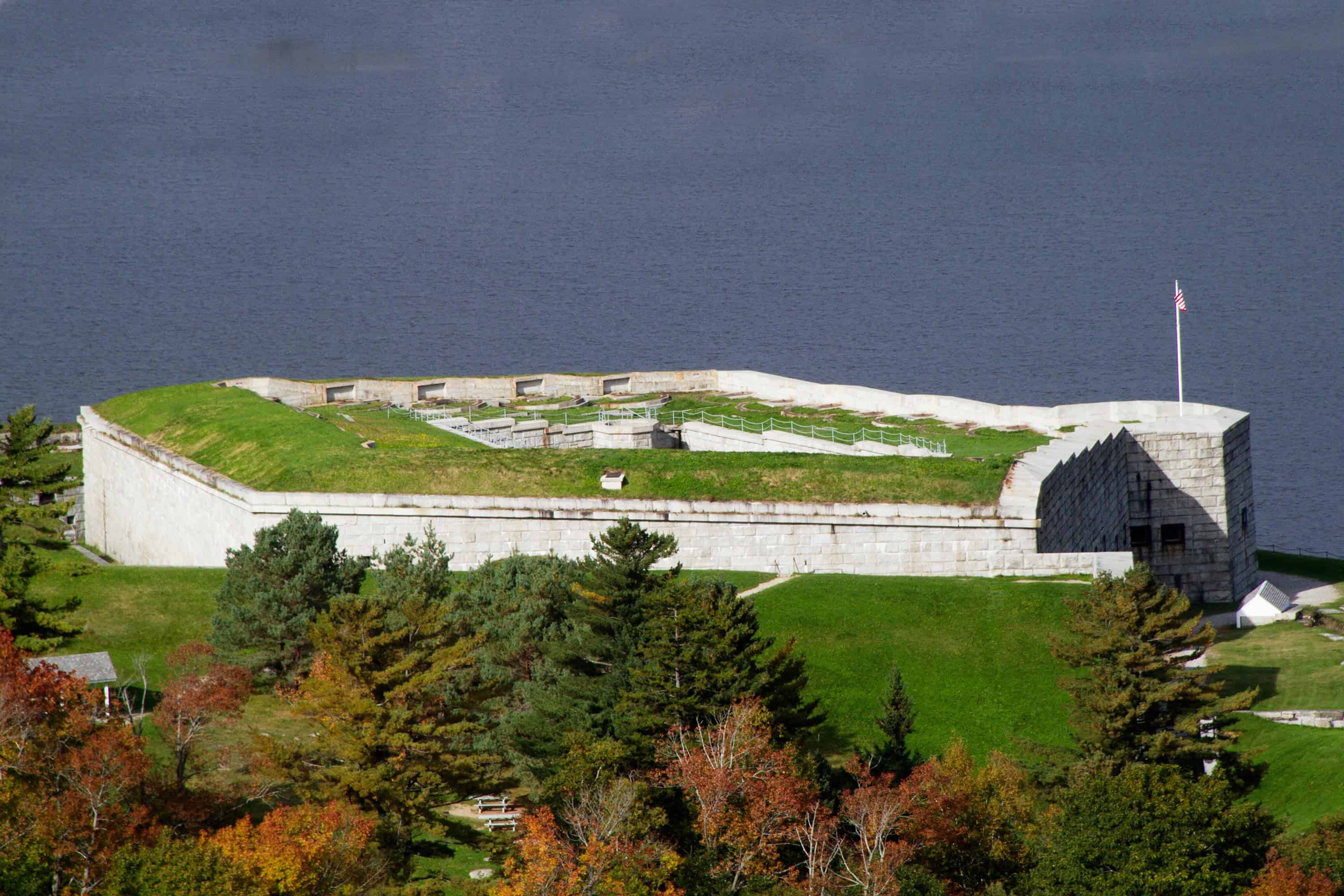
Fort Knox is probably the most secure bank vault in the world. We can find the US Bullion Depository in Kentucky on the north of Elizabethtown and the south of Louisville. They named it after Henry Knox, the first secretary of war for the United States and the Chief of Artillery during the American Revolutionary War.
You might wonder how secure is Fort Knox, but the answer can’t truly be specified. This is because there are no accurate details on the specific measures taken inside and outside. There are only two confirmed methods regarding Fort Knox security: that a steel fence covers it and that walls were built to last modern warfare.
There’s a good reason for the strict safety measures inside Fort Knox. A gold vault may sound quite normal to you, but Fort Knox takes it up a notch by safeguarding 147 million troy ounces of gold for the United States. As a result, the official name of Fort Knox Bullion Depository is the United States Bullion Depository. Other people call it the Fort Knox Gold Depository as well. Aside from holding a large sum of a country’s money, it also keeps the original Declaration of Independence, the United States’ constitution, and the Bill of Rights during the World War.
Svalbard Seed Bank
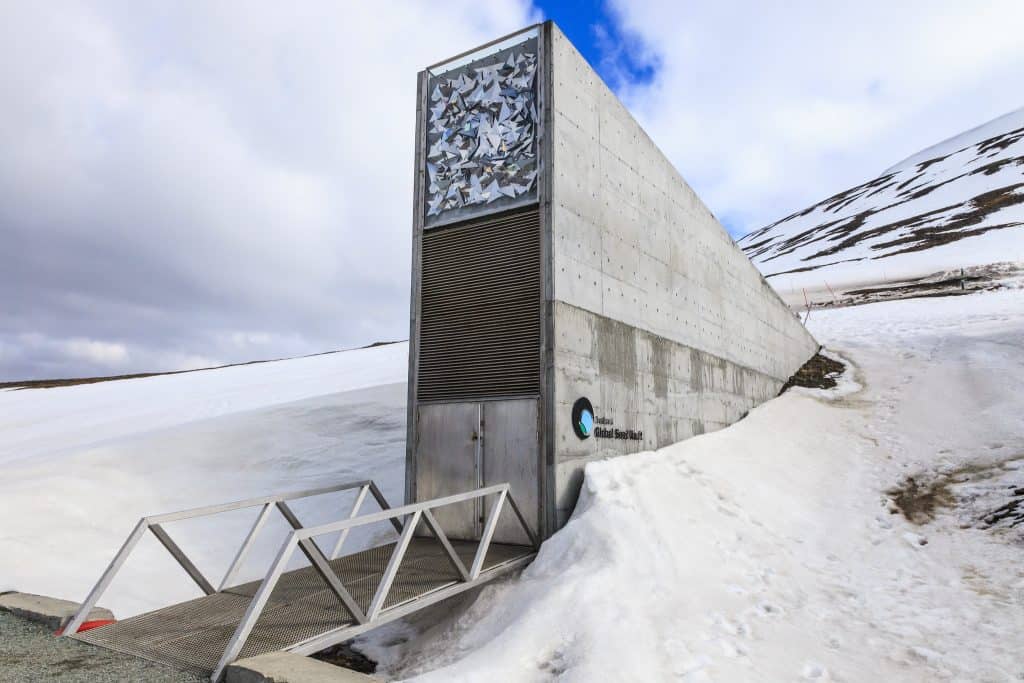
The Svalbard Seed Bank, also known as the Global Seed Vault, is a secure vault located on a small island called Spitsbergen in Norway. Some people declare it to be the most secure building in the world. This modern bank vault holds samples of crops necessary to restart life on earth should an apocalyptic event occur. Svalbard Seed Bank can store 4.5 million varieties of crops. It currently holds 1,081,026 samples as of the year 2022.
The necessity for the Svalbard Seed Bank comes from the lack of proper reserves for food crops. About 1,700 gene banks do exist in other countries. However, their reserves can easily be damaged because of natural disasters, wars, and other unforeseen accidents. To ensure that most of the crops in the world can still be reborn, the Global Seed Bank exists as a backup for the world’s seeds in the event of a massive extinction for specific crops or even humankind itself.
Because of the necessity for its existence, the Svalbard Seed Bank is also located on an isolated island with extreme arctic climates. This serves three specific benefits for the Global Seed Vault. First, it allows long-term shelf life for the seeds stored inside the bank. Second, it acts as a natural defense because of the difficulty of accessing it. Third, the Svalbard Seed Bank is high above sea level, ensuring its safety.
Granite Mountain
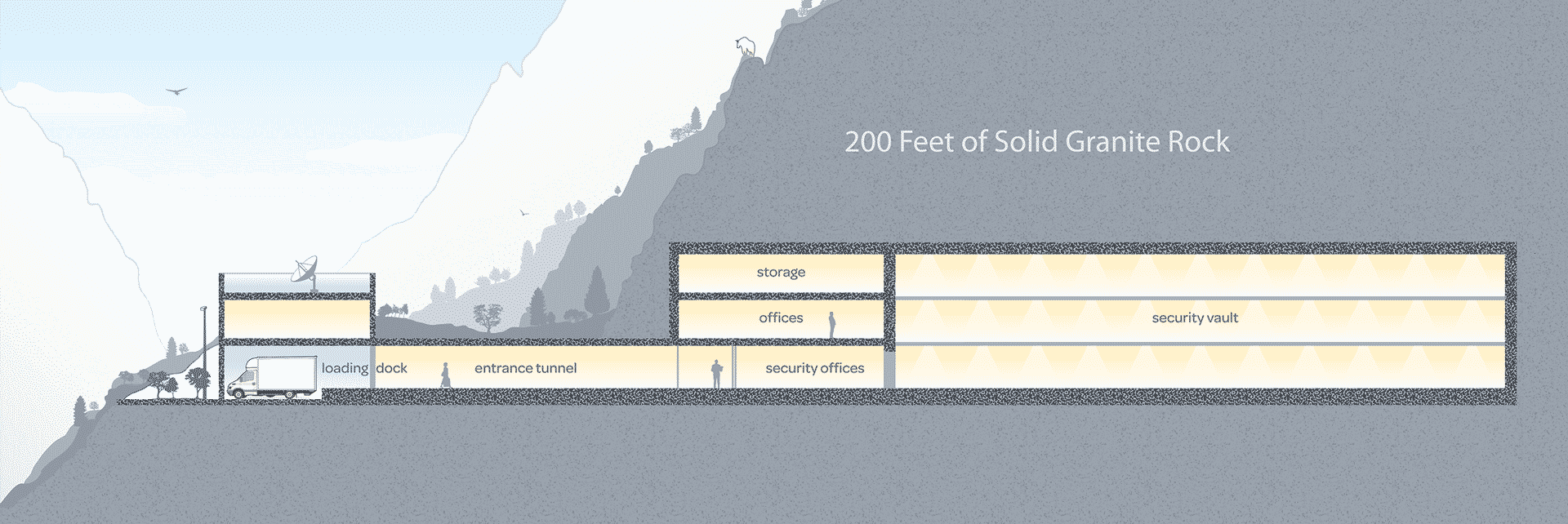
Granite Mountain serves both as a majestic view and a tightly shut secure vault no one can simply enter. It’s possible you only saw these types of safes in movies like the National Treasure series and think they are entirely fictional, but they do exist. Granite Mountain can be found near Salt Lake City, Utah in the United States. The Church of Latter-day Saints built the Granite Mountains Records Vault in 1965 to preserve necessary documents for the Church. Included in the Granite Mountains Records Vault is an impressive amount of data regarding family histories.
Granite Mountain is more widely known for its 3.5 billion images on microfiche, digital media, and microfilms. The vast collection has been in agreement with various libraries, churches, and archives spanning hundreds of countries around the globe. Copies of records in the records vault are freely given to those who follow their procedures. The Church of Latter-day Saints offers a free family website called FamilySearch, which takes records from Granite Mountain and launches them publicly for people looking for their relatives or data that they have lost. It is effective enough to even help the people of the Niue Islands, who were hit by a natural disaster in 2004, losing almost all of their records.
Since the records change lives, the Granite Mountain Records Vault is heavily guarded with it stationed 600 feet deep in the mountain with an environment-controlled facility. Even more so, simply entering through the Granite Mountain’s doors without permission is almost impossible. This is because the booth doors individually weigh a maximum of 14 tons. For reference, these doors are durable enough to withstand nuclear blasts.
Iron Mountain Vault

The Iron Mountain Vault is the biggest vault in the world. It’s a secure vault hidden underneath the mountain nicknamed “The Underground“, which goes as deep as 220-feet. It expands as far as 1.8 million square feet.
You could find the Iron Mountain Vault in the abandoned limestone mine from Boyers, Pennsylvania. Similar to Granite Mountain, Iron Mountain contains a temperature-controlled location that is heavily protected by armed guards. The difference between Iron Mountain and Granite Mountain is the documents that they contain. Iron Mountain protects valuable records that could alter lives and information for the world. Iron Mountain holds the wills of Princess Diana of Wales, Charles Darwin, and Charles Dickens. They also contain Bill Gates‘ Corbis photographic collection, which the Iron Mountain keeps stored at a cold-temperature cave.
So how far does Iron Mountain go to protect the world’s most important documents? The armed guards of Iron Mountain continuously monitor the location similar to Federal Reserve Police. In addition, a variety of environment-controlled caves are set up with humidity conditions ranging from medium to extended terms. You can even request your private vault within Iron Mountain, of course with some financial costs. The only access to Iron Mountain is a 3-ton gate with the guards constantly guarding the area with state-of-the-art surveillance systems.
Cheyenne Mountain
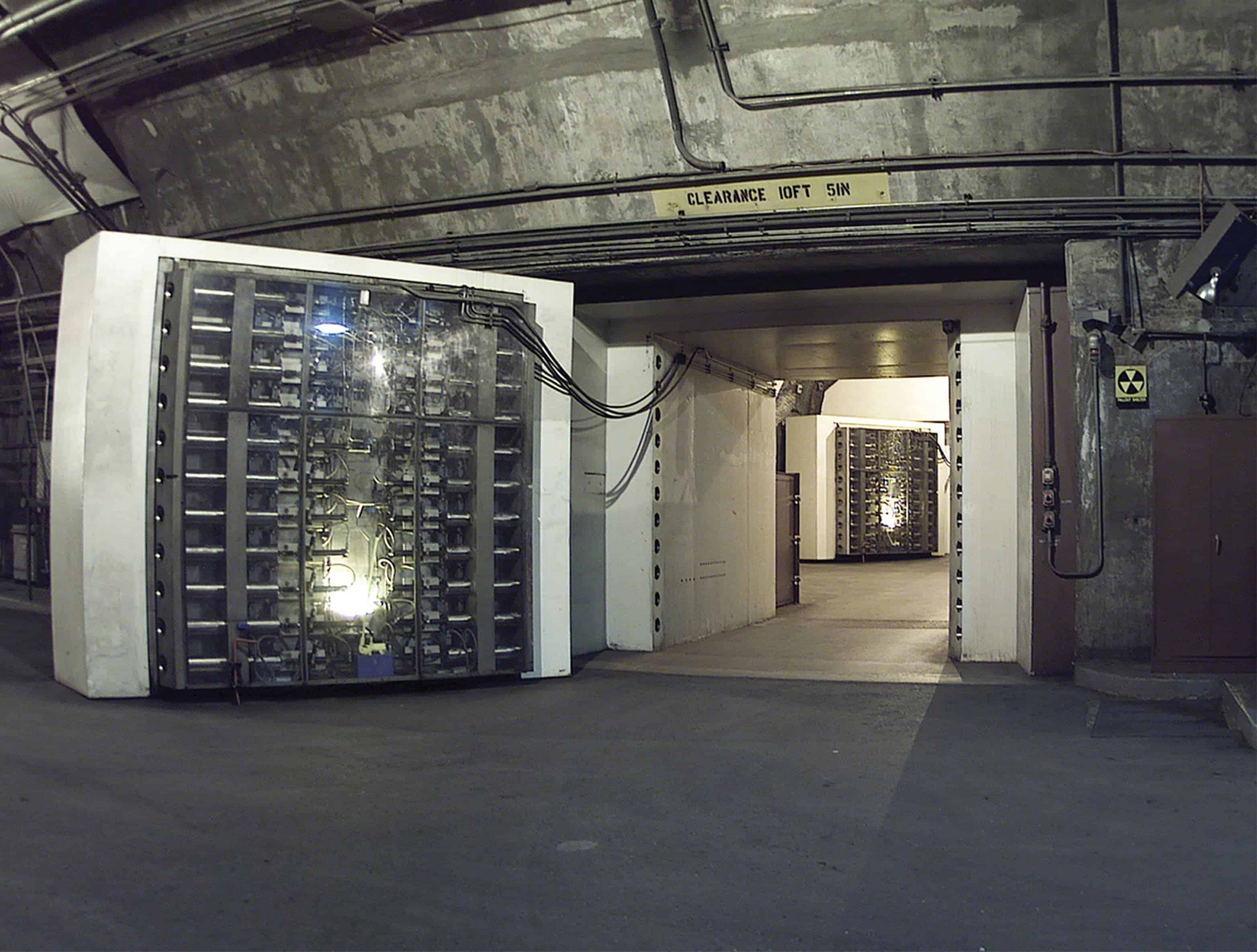
Cheyenne Mountain follows Granite Mountain as one of the natural structures used to create a secure vault. The Cheyenne Mountain is located in El Paso, Colorado. Among the mountain range contains the Cheyenne Mountain Complex, which formerly held the Cheyenne Mountain Space Exploration and a defensive bunker with the ability to withstand nuclear blasts. Cheyenne Mountain Complex is currently being used as an air force station, a backup center, and a training center.
The facility has been used for years as a military base for various forces such as the NORAD, Air Force Systems Command, Federal Emergency Management, the Air Weather Service, the US Space Command, and the Aerospace Defense Command. Because of its advanced communication system, it was once used as a communication for the US Civil Defense Warning Center. Historically speaking, Cheyenne took part in monitoring the airspace of the United States and Canada in the case of a foreign aircraft.
Because of its previous housing of important military bases, the Cheyenne Mountain has heavy security systems that cannot be found anywhere else. People working in Cheyenne Mountain comfortably do their jobs behind a pair of 25-ton doors with the ability to withstand 30-megaton impact blasts. This would mean that the atomic bomb that landed on Nagasaki would have to strike at the area at least a thousand times before it could even crack the gates. It’s even hidden safely 2,000 feet deep into the natural granite of Cheyenne Mountain. Because of the lack of air, they manually filtered it through so the employees could breathe the cleanest air in the world.
Teikoku Bank – Hiroshima
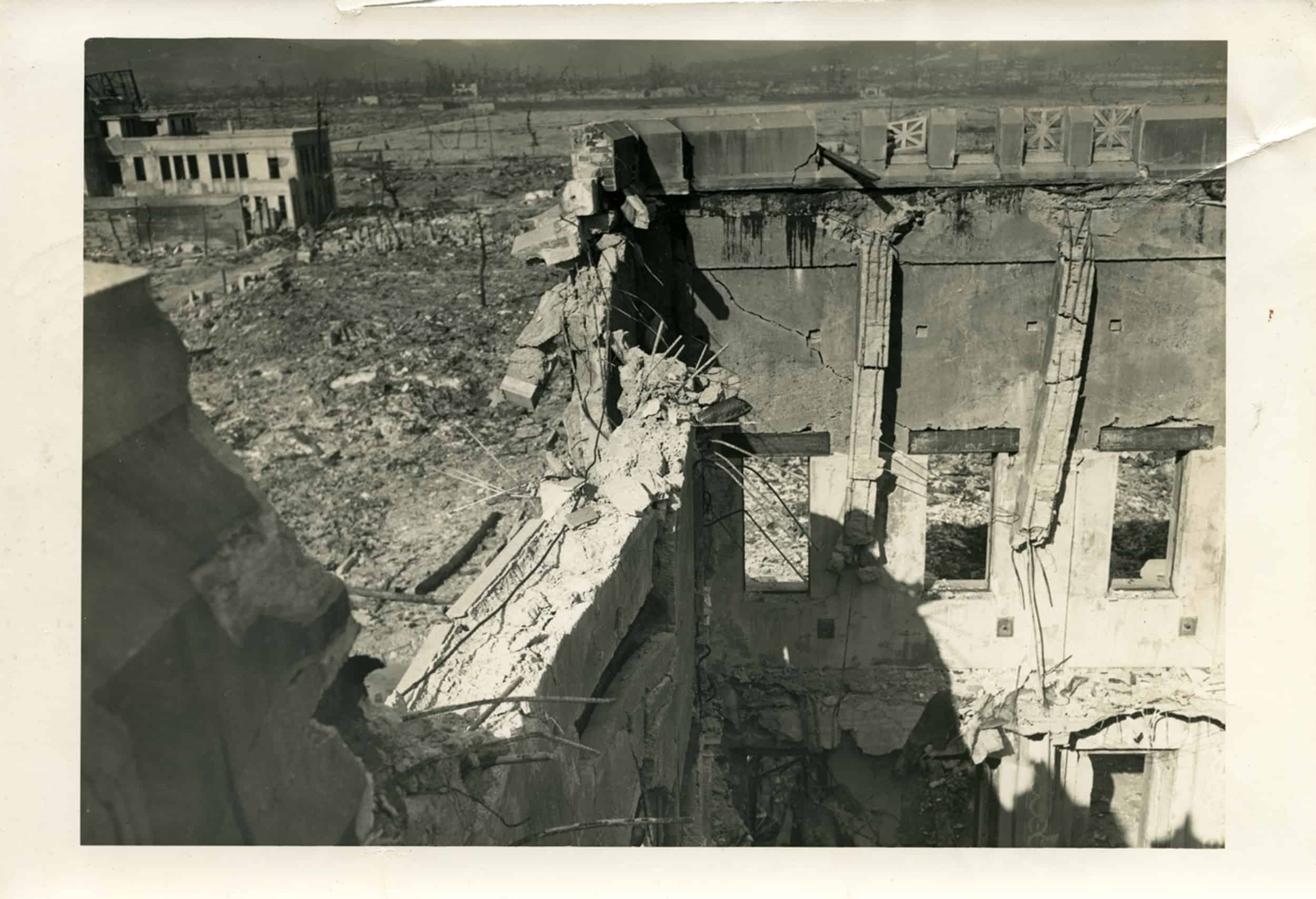
What is the most protected building on earth? Teikoku Bank’s Hiroshima branch was. A secure vault inside the Teikoku Bank, along with its exterior building, was one of the very few structures that survived the atomic bomb that took place during the Second World War. The company that made the vault tactlessly advertised it as the strongest safe in the world. While they announced their words at the wrong place and at the wrong time, they weren’t quite far off from the truth.
Teikoku Bank was first built in 1925 under the name Mitsui Bank. Mosler Safe Company supplied the bank with two vaults at the beginning of Mitsui Bank. They were stable and functioning long enough to last up until the dropping of the atomic bomb on Hiroshima on August 6, 1945. The blast occurred just 360 meters from the branch’s location. This resulted in most of the area being wiped off. Surprisingly, the two-story building of Teikoku Bank’s exterior remained intact along with the two Mosler vaults.
E.H. Mosler, the president of the Mosler Safe Company at the time, exploited the impressive results of the vault. An existing letter from 1950 from the manager of Teikoku Bank affirming the withstanding ability of the vaults. In the letter, the manager of Teikoku Bank explains that they only did minor repairs to the vaults and have been discussing their function to guests and clients. E.H. Mosler then used these types of proof given to him to gain international clients to purchase their safes for a decade. The Mosler Safe Company has closed because of bankruptcy in 2001.
The Chamber of Gold
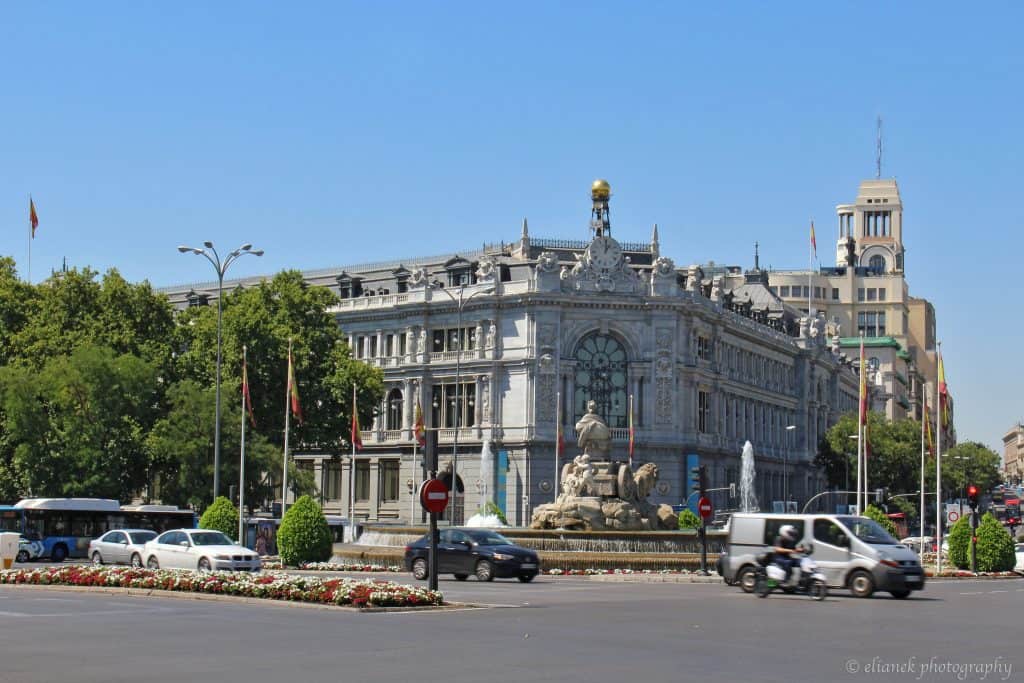
Many countries declare that they have the most secure vault in the world. Among them is Spain, which has a fighting chance for the title because of its Chamber of Gold. The Bank of Spain contains a vault called The Chamber of Gold which houses most of the Spanish gold reserves that can date far back as the 12th century. It is located 37 feet deep in the Bank of Spain, which is in front of the Cibeles Fountain.
Security functions of The Chamber of Gold are quite similar to many of the ones listed in this list. It was featured in the hit Netflix series Money Heist, where the state-of-the-art security measures of the vault are shown. While the show exaggerated many of the security features, it was also not that far from the truth. Unlike most vaults in the modern world, The Chamber of Gold has one particular function that relates to the Cibeles Fountain. Should the modern alarms go off inside the Bank of Spain, water will be released from above The Chamber of Gold, flooding the entire vault. The source of this water is the same water that feeds Cibeles Fountain.
Not much data has been released to the public regarding the amount of gold inside the Bank of Spain. The only confirmed items are the antiquities such as gold coins which predate modern banking. The mysteries surrounding its amount also increase curious thieves, which is why there are actually three steel doors (instead of one seen in Money Heist) protecting the chamber and the identification of two high-ranking officials in the Bank of Spain.
Federal Reserve (Bank of New York)

The Federal Reserve is a famous secure vault that comprises twelve locations across the United States. We are here to discuss a particular branch of the Federal Reserve: the Bank of New York. The New York branch is the largest active member of the Federal Reserves. As a result, the Bank of New York has also become the Federal Reserve’s market agent and the US Department of Treasury’s only fiscal agent. The Bank of New York also contains the world’s largest gold storage reserve.
Benjamin Strong, Jr. founded the Federal Reserve and the Bank of New York in the year 1914. Strong became the governor of the Federal Reserve and kept his position until his death. His leadership with the Federal Reserve has become the footprint for modern central banking to this day. Because of this, the Bank of New York, his headquarters, remains top of the game in terms of financial gain with over 497,000 gold bars. With so much value locked in its chambers, it’s no wonder that the Federal Reserve increased its security.
The Federal Reserve’s security system isn’t truly specified. Although it is true that the US Federal Reserve Police exists to guard these vaults. The Bank of New York also boasts a multi-layered security system that not many people have seen or have any information about. The location of the famous gold vault has been said to be on the basement floors. A fun fact about the Federal Reserve is that it holds not only the United States’ gold but also of foreign countries and private account holders.
Bank of England-Gold Vault
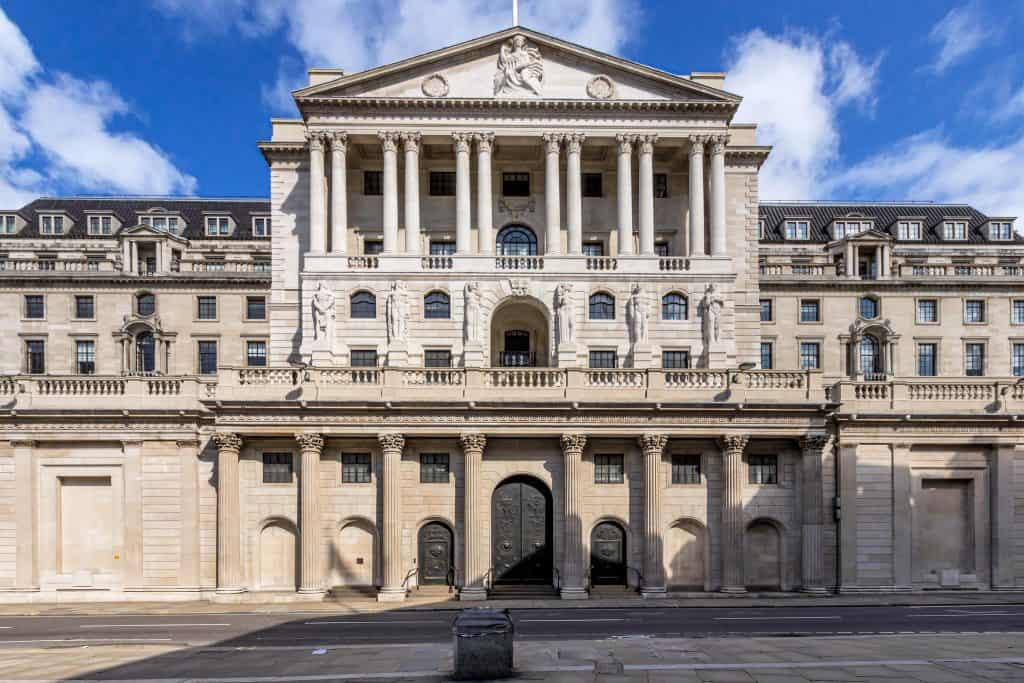
The Bank of England is a secure vault owned by the UK Government, which is also declared as the central bank of the United Kingdom. It was established in 1694 after England lost to France at the Battle of Beachy Head. As the eighth oldest bank in the world, the Bank of England monopolizes issuing banknotes for England and Wales.
An interesting topic regarding the Bank of England is its alarming number of gold. The gold vault of the Bank of England houses 400,000 bars as of 2016. This is the equivalent of 5,659 tons of gold. To sum this up, the gold inside the Bank of England has enough potential to raise its gold value containing 3% of the world’s gold. This makes the Bank of England the second-largest keeper of gold.
It is only logical to keep a large sum of gold safely locked and out of the public’s eye. This is why access to the gold vault is strictly prohibited. The Bank of England allows trades between gold bar customers. Unfortunately, it is dangerous to have someone constantly enter the vault to switch gold bars. The Bank of England instead renames the owners of the bars under their database. As the two leading royals of the United Kingdom, Queen Elizabeth II and Prince Charles have taken a stroll among the gold bars before. A group of journalists from BBC have also visited the gold vault. However, they could only film very few clips to protect the gold.
Bahnhof
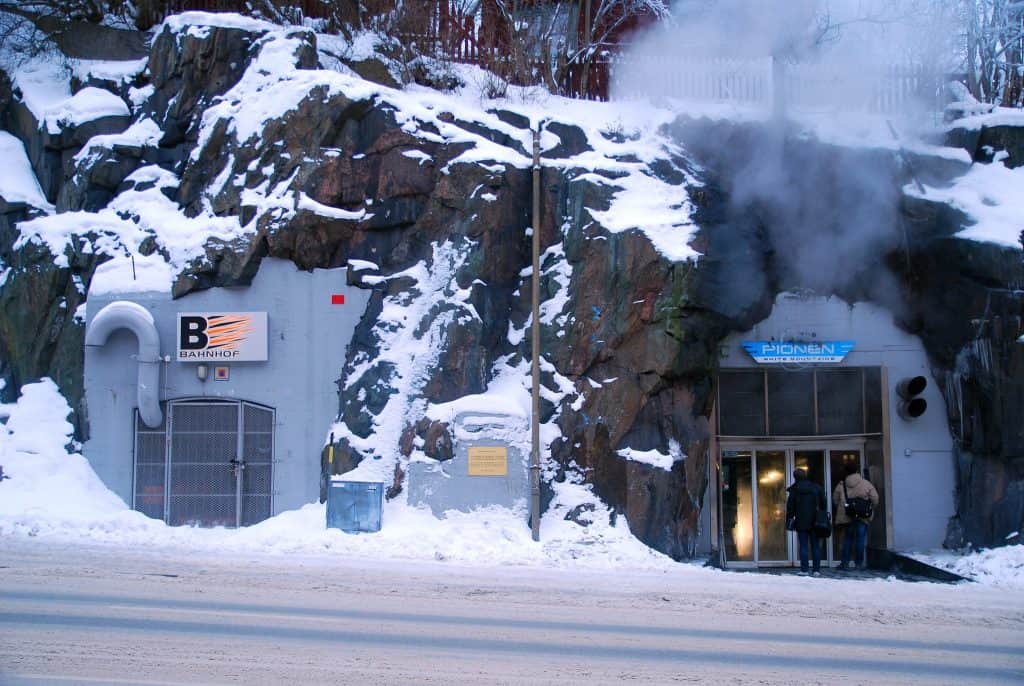
The final vault on our list is a secure vault no one from the past would have imagined ever existing. While vaults were created to conceal and safely keep precious jewels, gold, and artifacts, the Bahnhof vault protects WikiLeaks. You can find Bahnhof Data Center located inside the bunker Pionen. The bunker itself is several feet deep inside the White Mountains of Stockholm.
The Swedish bunker acted as a nuclear bunker and a cold war shelter. It then turned into a storage facility for WikiLeaks on the 9th of December in the year 2010. But what is WikiLeaks? Jon Karlung, the chairman and founder of Bahnhof, provides salvation and security for two slim black boxes with blue lights. These were the servers that were kept hidden because of the WikiLeaks whistleblowing confidential documents regarding the US Embassy. Julian Assange, the creator of WikiLeaks, has his computer hidden in their vaults despite his arrest for sexual allegations.
While the Bahnhof Data Center is practically impenetrable thanks to the bunker, cybersecurity is what they primarily focus on. Despite the controversy regarding Assange’s website, Bahnhof has accepted them as their client. Employees of the data center only need their clients to not violate Swedish laws and pay their dues accordingly.
Conclusion
Having a real bank vault that protects your hard-earned money makes you feel at ease. That is why the business of creating more secure vault types is consistently growing.
A vault can symbolize both materialism and defense, but it can also symbolize the intentions of a person. Someone with the biggest safe in the world might only use it for sentimental goods, while some use it to hold terrible and destructive secrets.
We hope our article helped you in your search for the most secure vault locations and types in the world. Who knows? There may be more vaults unheard of that are more secure than Fort Knox.
Was this page helpful?
Our commitment to delivering trustworthy and engaging content is at the heart of what we do. Each fact on our site is contributed by real users like you, bringing a wealth of diverse insights and information. To ensure the highest standards of accuracy and reliability, our dedicated editors meticulously review each submission. This process guarantees that the facts we share are not only fascinating but also credible. Trust in our commitment to quality and authenticity as you explore and learn with us.
